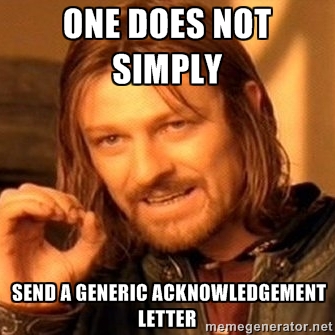 So many of the challenges the nonprofit sector faces exist because of our poor portrayal in the media. This is why I think we should lobby for more shows that highlight the exciting and complex work all of us in the field are doing. A while ago I wrote about “Nonprofit and Afraid,” a show where people who have little experience with nonprofits are put to work at a nonprofit for six weeks. Here are some other ideas I’ve thought of, and sneak previews of what they might look like:
So many of the challenges the nonprofit sector faces exist because of our poor portrayal in the media. This is why I think we should lobby for more shows that highlight the exciting and complex work all of us in the field are doing. A while ago I wrote about “Nonprofit and Afraid,” a show where people who have little experience with nonprofits are put to work at a nonprofit for six weeks. Here are some other ideas I’ve thought of, and sneak previews of what they might look like:
Dancing with Program Officers:
12 nonprofit staff are paired with 12 program officers of local foundations to learn various funding dances, including the “Should I call them first or should I just send in the LOI?” and “Who should pay for lunch?”
Emcee: On the floor now are Alan and Marjorie. Alan, the DD of Think of the Children, has been having trouble rehearsing for the Site Visit Dance, a nerve-wracking number with feints and swirls. Marjorie, his partner and program officer at the Swifter Foundation, has been supportive in her coaching. Let’s see how they fare tonight:
Alan: Thanks for coming down to see our program in action, Margaret. I’m sorry, I mean Marjorie…
Marjorie: No problem, people get that wrong all the time. I should just change it, ha ha.
Emcee: An understandable stumble, given his nerves, and a graceful recovery, but our panel of judges does not look happy.
Alan: This year, we served 390 kids, 85% free-and-reduced-lunch, through four programs…
Marjorie: That’s wonderful. What are some of the results you’ve seen?
Emcee: The Site Visit Dance is a tricky dance, since it combines both technicality and heart. Alan is relying too much on technique. He needs to bring more heart, more stories. Let’s hope he doesn’t flub this one like he did last week in the “Clarifying Questions on the Proposal Budget” dance. Continue reading ““Dancing with Program Officers” and 5 other nonprofit-themed reality TV shows we need”
 Hi everyone, happy holidays. I hope that you are taking it easy these next couple of weeks. This week, instead of reading serious articles about our sector, I learned about the dark origins of Christmas carols. Apparently, back in the olden days, carolers were drunk hooligans who went door-to-door demanding to be let in and served your best food and booze, and could get rowdy and belligerent if you turn them away.
Hi everyone, happy holidays. I hope that you are taking it easy these next couple of weeks. This week, instead of reading serious articles about our sector, I learned about the dark origins of Christmas carols. Apparently, back in the olden days, carolers were drunk hooligans who went door-to-door demanding to be let in and served your best food and booze, and could get rowdy and belligerent if you turn them away.



